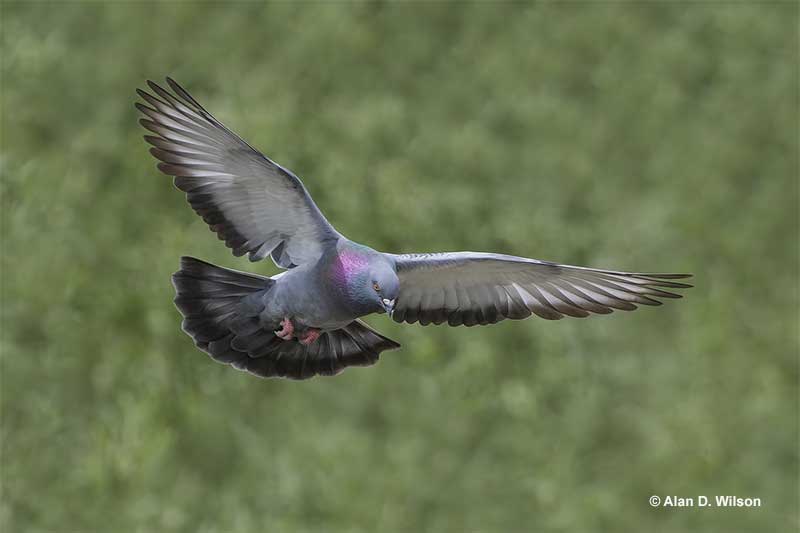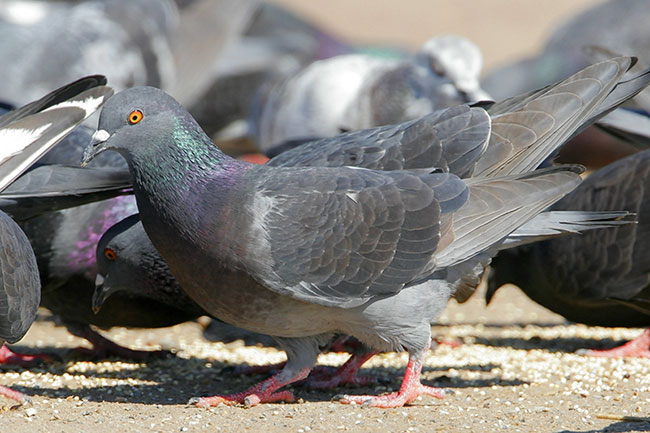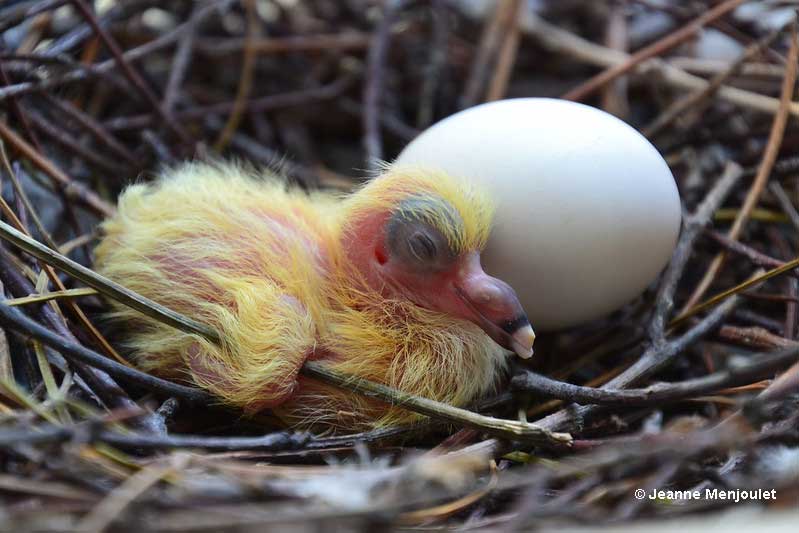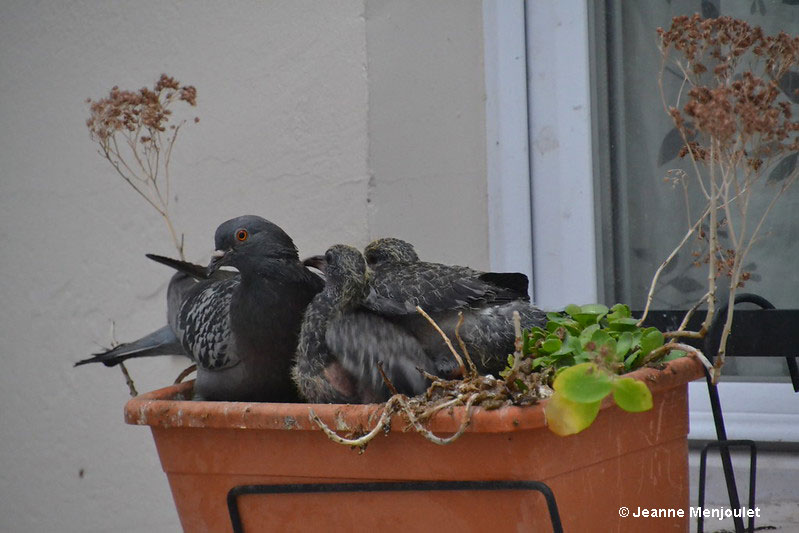
Pigeons are so familiar, we can overlook them. In urban areas and farms, there always seem to be a lot of pigeons. It’s hard to imagine how so many pigeons can survive in city settings and near people!
How long do pigeons live? And are there many animals that prey on them?
Key takeaways:
- Pigeons are almost like domesticated birds, just living freely in urban areas.
- While it’s difficult to say how long pigeons generally live, their average lifespan is around 2-3 years.
- Pigeons face predators in many areas, mainly in the form of bigger birds.
On this page
How Long Do Pigeons Live?
Rock Pigeons are hardy and successful birds. However, how long can they really live? How do they survive in places where other birds can’t?
Pigeons are common, but wild ones don’t live as long as many other birds.
In the wild, they have a tough life, and most only live for two to three years. As with most bird species, there are also certainly some lucky and more capable pigeons that live for seven or maybe even ten years.
However, biologists believe that most wild pigeons don’t make it past their third year. Living near people, the birds have to deal with an abundance of predators, may be susceptible to pollution and diseases, and cab struggle to find enough food.
Related: How long do birds live?
In captivity, though, these familiar birds can live much longer. With care, captive pigeons often live for 15 or even 20 years!

This big difference in lifespans between wild and captive pigeons happens because pigeons are an important food source for a variety of predators. While captive birds don’t even need to fly, a wild bird that doesn’t fly as well is quickly singled out and caught by a predator.
Wild birds are also much more susceptible to diseases than domesticated pigeons.
Biggest Dangers
Pigeons are preyed on by a variety of predators. Birds that live in cities and other urban areas have to be very wary of domestic cats. These small predators are highly adapted to catching pigeons and all sorts of other small and medium-sized birds.

However, their main predators are probably raptors. In New York City and elsewhere, urban Red-tailed Hawks have learned to catch pigeons. These birds have become an important part of their diet!
Read more: Do all hawks eat birds?
In suburban areas and around farms, Cooper’s Hawks are also an important predator of pigeons. The birds are the perfect size for this hefty and powerful hawk.
These two raptors catch a number of pigeons, but they also eat other animals. The Peregrine Falcon, on the other hand, only eats birds and pigeons are at the top of the menu. Watch a flock of pigeons in just about any city in the USA or Canada, and you might see one of these deadly falcons diving at the swiftly flying doves!
Other predators also catch pigeons when they can, especially baby pigeons. Snakes try to get to them, and owls and other predators can also catch them.
The other main danger faced by pigeons is disease, especially when pigeon flocks are kept in captivity.
The Life Cycle of Pigeons
Pigeons can nest throughout the year and sometimes raise two or three broods per year. In some places, they even nest in winter!
Rock Pigeons start nesting when a male chooses a suitable site and calls to attract a female. If a female picks him to be her mate, she sits at the nest site while the male brings her sticks. The female pigeon tucks the sticks in around her to make a shallow, unkempt nest that she may use over and over.
These adaptable birds aren’t too picky about where they nest and can raise young on the ledges of tall buildings, on other structures, and cliffs.
The main thing they need is a flat surface above the ground that is protected by a ledge, roof, or other structure.

The female lays two white eggs, and both parents incubate them for 18 days. After hatching, for the first four days, they feed their babies a protein-rich substance called “crop milk”. On the fifth day, they feed the nestlings crop milk with seeds, and give them adult food by the ninth day after hatching.
Around 25 to 30 days after hatching, the young birds leave the nest and fend for themselves.
Can You Tell How Old A Pigeon Is?
In general, once a pigeon becomes an adult, you can’t really tell how old it is. After one year of age, pigeons molt into their full adult plumage and males and females look similar.
If a pigeon lives to be ten years old, it might start to show some pale or worn feathers, but even these can be hard to see. Juvenile pigeons, though, can be recognized by fairly uniform plumage and pale markings on the edges of the feathers in their wings.

Although they are still in the nest, their lighter markings are easy to see.
Such young pigeons are less than one year old. Younger pigeons look very different and have much less feathering on their heads and bodies. However, we rarely if ever see them because these baby pigeons stay more of less hidden in their nests.
Pigeons & Fun Facts About Them
- The diseases that affect pigeons the most are Canker, Paramyxovirus, and Salmonella. These diseases are more prevalent in captive pigeon coups than in wild birds. Luckily, captive birds can be vaccinated against Paramyxovirus and Salmonella.
- In some parts of Europe, huge Wel’s Catfish have learned to hunt pigeons! The big predatory fish wait for pigeons to come to the water’s edge to drink and then snatch them with their big mouths.
- Pigeons prefer to nest in spots protected from the elements because baby pigeons that hatch in spots exposed to rain, sun, and snow rarely survive.
- Sometimes, nestling pigeons leave the nest too early. Unfortunately, these baby birds seldom survive because their parents won’t take care of them.
- In tropical Asia, pythons can climb to pigeon nests and attack them!
- Rock Pigeons have learned to nest on buildings because these structures resemble the cliffs that they would normally use.
- Pigeons can survive in cities because they eat food scraps left by people and seeds, and nest on buildings all year long.
- Captive pigeons require plenty of space, a clean enclosure, water, and quality commercial pigeon food.
- Pigeons are smarter than we think. These birds can recognize themselves in a mirror and even learn to recognize different people.
- Rock Pigeons escape falcons by flying as fast as 90 miles per hour.
Keep reading: How common are albino pigeons?

